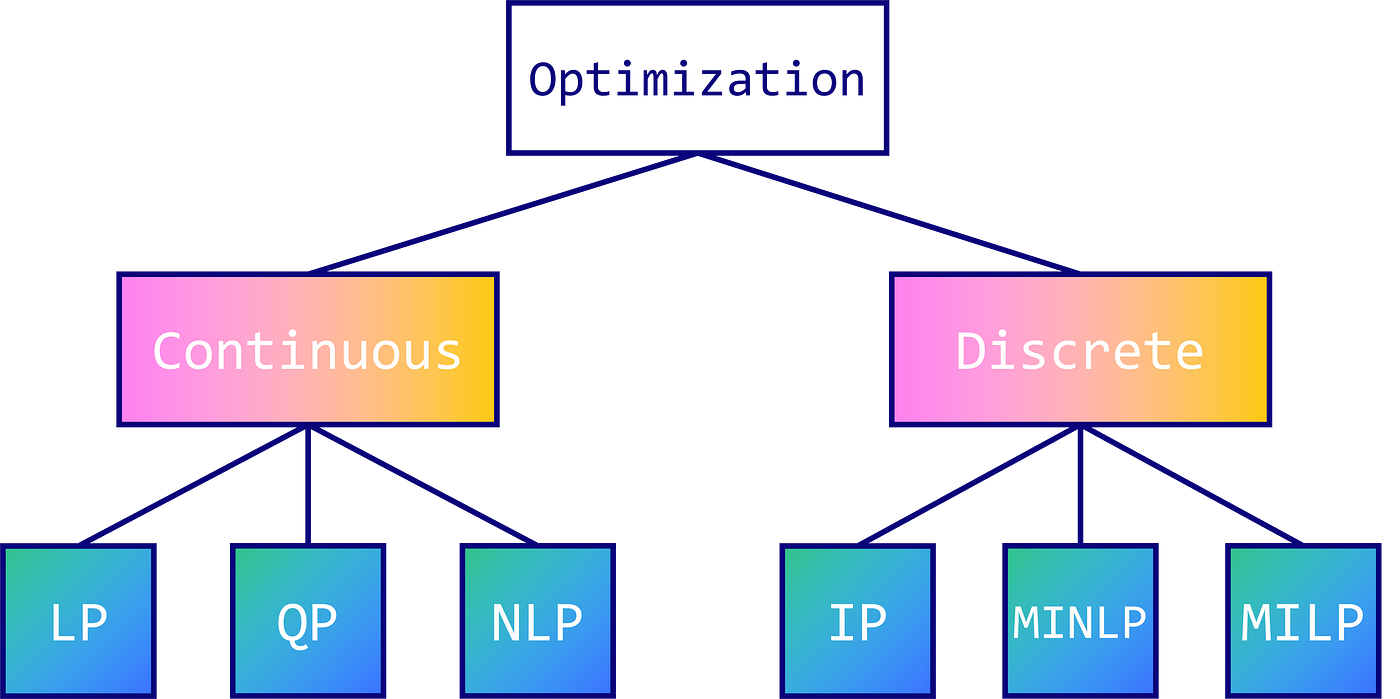Integer Programming Differ from Linear Programming

Integer programming (IP) is a generalization of linear programming (LP) where decision variables are constrained to take integer values, rather than continuous values. This key difference leads to several distinctions between IP and LP:
-
Nature of Decision Variables:
- LP: Decision variables in LP can take any real value within their specified ranges.
- IP: Decision variables in IP are restricted to integer values, typically non-negative integers, such as 0, 1, 2, etc. This restriction introduces combinatorial aspects into the optimization problem.
-
Feasible Solutions:
- LP: Feasible solutions to LP problems can include fractional values for decision variables. These solutions lie on the vertices or along the edges of the feasible region defined by the constraints.
- IP: Feasible solutions to IP problems must satisfy the integer constraints, meaning decision variables can only take integer values. This constraint often leads to a discrete feasible set, making the problem more challenging to solve.
-
Complexity:
- LP: LP problems are generally easier to solve computationally compared to IP problems. Efficient algorithms such as the simplex method or interior-point methods can often find optimal solutions to LP problems in polynomial time.
- IP: IP problems are NP-hard, meaning there is no known polynomial-time algorithm that can solve all instances of integer programming problems. As a result, solving IP problems can be computationally intensive and may require specialized algorithms, such as branch and bound or cutting-plane methods.
-
Applications:
- LP: LP is well-suited for optimization problems where decision variables can take fractional values, such as production planning, resource allocation, and transportation problems.
- IP: IP is used when decision variables must be discrete or binary, such as in scheduling, network design, facility location, and binary optimization problems.
-
Optimality:
- LP: LP problems are often easier to analyze, and optimal solutions can be characterized mathematically using properties such as the convexity of the objective function and constraints.
- IP: Finding optimal solutions to IP problems can be more challenging due to the discrete nature of the feasible set. Even when an optimal solution is found, it may not be unique, and the search space for optimal solutions can be large.
In summary, integer programming extends linear programming by restricting decision variables to integer values, which introduces combinatorial aspects and makes the problem more complex to solve. While linear programming is suitable for continuous optimization problems, integer programming is necessary for discrete optimization problems where decision variables must be integer or binary.
Thank you,
